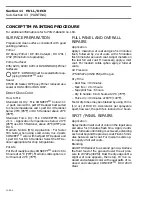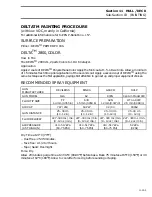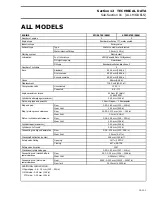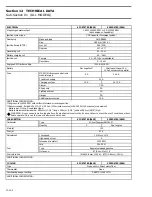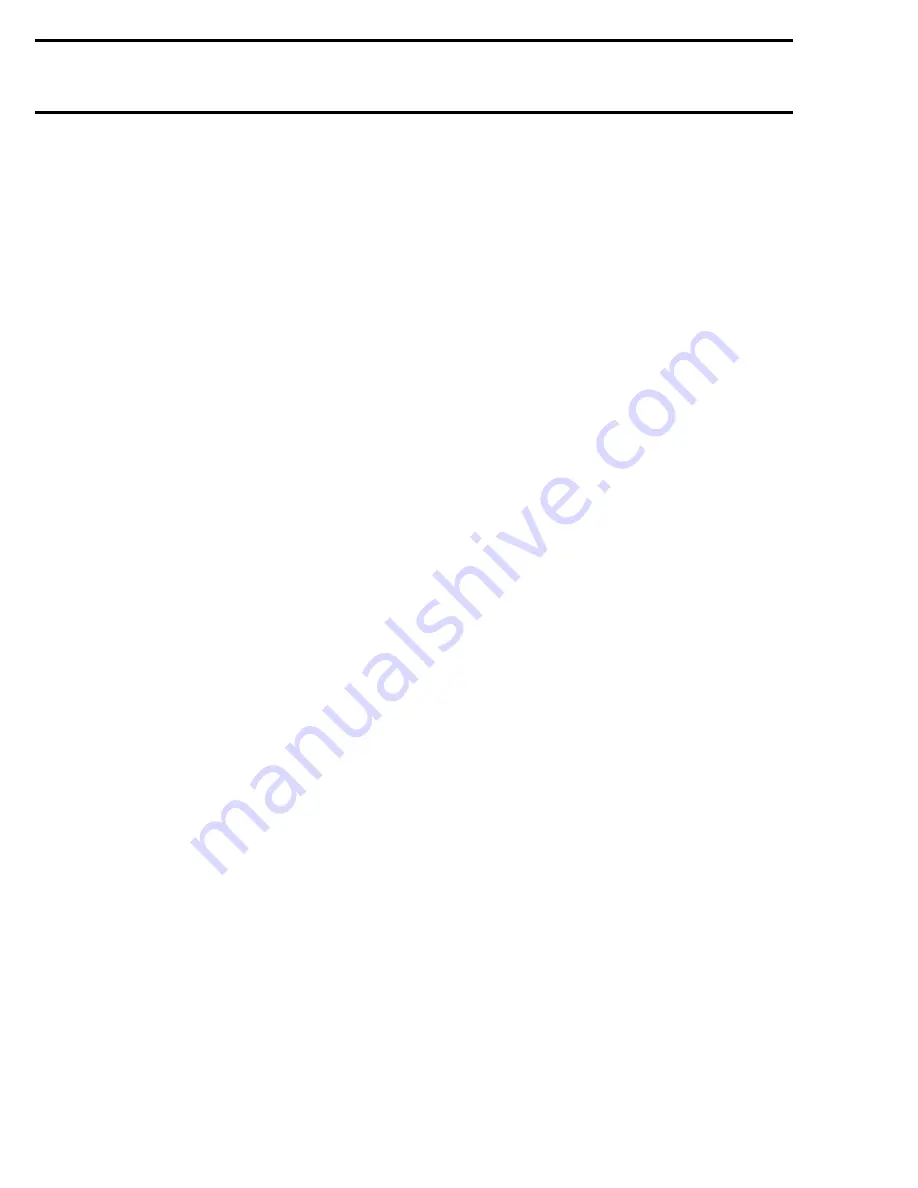
Section 11
HULL / DECK
Sub-Section 01
(COMPONENTS)
11-01-6
BUMPER REPLACEMENT
Bumper and Trim
NOTE :
Prior to beginning job, place bumper
trim in a container of hot water to soften ma-
terial and ease installation. In cool weather,
bumper rail may be warmed too.
1. Remove bumper cover at rear of boat.
2. Remove trim from bumper rail.
3. Drill pop rivets to remove bumper rail.
4. Mark hole positions on body.
5. Using a 4.80 mm (3/16 in) drill bit, drill a first
hole through bumper rail at any rear end. Use
locating mark as a guide and install a rivet.
CAUTION : When drilling, be careful not
to damage bumper rail and / or hull.
NOTE :
Check condition of silicone joint be-
tween hull and body. Reseal as necessary
with sealant adhesive (293 800 033) or equivalent
without acetic acid vapors.
6. Position bumper rail properly onto body all
around coming back to other rear end and cut
excess length if necessary.
NOTE :
Masking tape may be used to tem-
porarily retain bumper rail ahead of your
work.
7. Install trim using soapy water. Gently tapping
trim with a rubber hammer will help to fit trim
in rail.
8. Reinstall bumper cover.
9. Check fit between bumper and body. Fill gaps
with silicone sealant as necessary.
DECAL REPLACEMENT
Removal
Using a heat gun, warm up one end of decal for a
few seconds until decal can roll off when rubbing
decal edge with your finger.
Pull decal slowly and when necessary apply more
heat to ease removal on the area that has to be
peeled off.
If decal tears while pulling off, it has to be heated
for a few seconds longer. If decal tends to stretch
while pulling off, stop heating and wait a few sec-
onds to let it cool, then peel it off.
Installation
There are 2 types of decals used on jet boat. One
has a protective film on back side and the other
has a protective film on both sides. They are used
on 3 types of materials
; plastic, gelcoat and met-
al.
Decals Having a Protective Film on Back Side
Only
These decals usually contain written information
(ex.
: warning) and are used on gelcoat or metal.
Clean surface with a good solvent such as
ACRYLICLEAN DX 330 from PPG or equivalent
(refer to manufacturer instructions).
Using a pencil and the new decal as a template,
mark the area where decal will be located.
Remove half of the decal back protective film and
align decal with marks. Start sticking it from cen-
ter and remove the other half of the film to stick it
completely. Carefully squeegee decal beginning
at center and working outward using, firm, short,
overlapping strokes.
Decals Having a Protective Film on Both Sides
These decals usually contain graphics and are
used on gelcoat or plastic.
Installation on Gelcoat
Clean surface with a good solvent such as
ACRYLICLEAN DX 330 from PPG or equivalent
(refer to manufacturer instructions).
For best result apply an activator (P
/
N 293 530
036) to prepare the surface using a clean cloth.
After a few seconds, when the activator evapo-
rates, the surface is ready.
Using a pencil and the new decal as a template,
mark the area where decal will be located.
For better adhesion a dry application is recom-
mended, however, to ease decal installation a
mild solution of soapy water can be sprayed over
surface where decal will be installed.
Remove back protective film from decal and align
decal with marks. When well aligned squeegee
decal beginning at center and working outward
using, firm, short, overlapping strokes.
Remove protective film once decal has adhered
to hull.
Installation on Plastic Front (Front Storage
Cover)
Clean surface with isopropyl alcohol.
'
-
'
'
Summary of Contents for Challenger 5896
Page 1: ......
Page 2: ......
Page 3: ...219 100 044 0 0 0 1996 Shop Manual 0 R ...
Page 152: ...Section 08 ELECTRICAL Sub Section 03 IGNITION SYSTEM 08 03 2 ELECTRICAL BOX Sportster F04H11S ...
Page 154: ...Section 08 ELECTRICAL Sub Section 03 IGNITION SYSTEM 08 03 4 ELECTRICAL BOX Speedster F04H26S ...
Page 251: ...Section 11 HULL DECK Sub Section 01 COMPONENTS 11 01 5 F04L3IS Loctite 242 ...
Page 274: ......

























